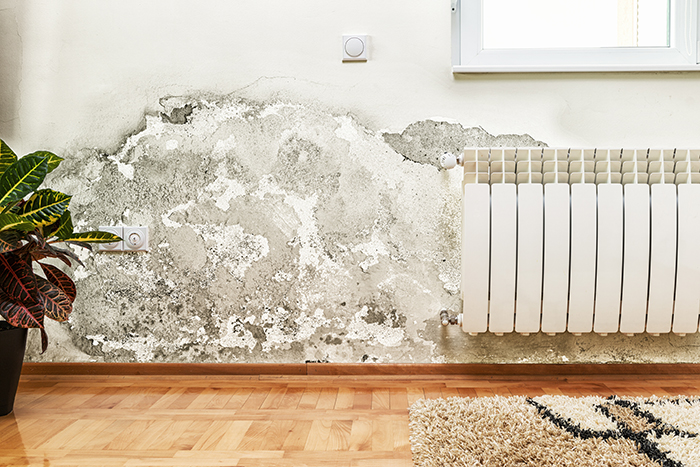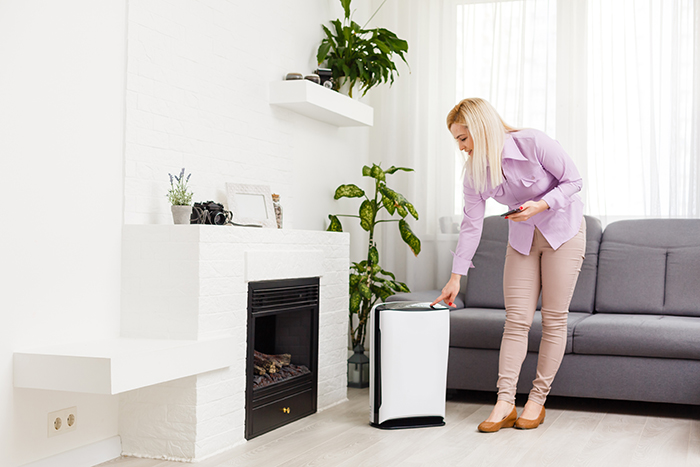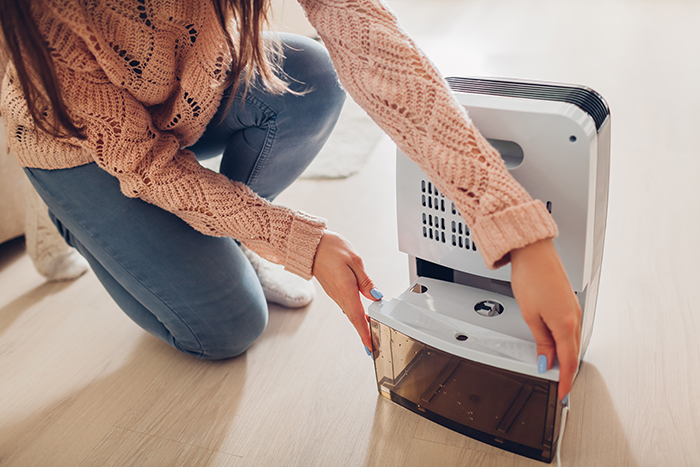What should the humidity be in a house
Humidity plays an important role in indoor air quality. But how do we know what the humidity of our home should be, or how to raise or lower it? Read on for how to measure and maintain humidity to keep your home comfortable and healthy for you and your loved ones.

What is humidity?
Humidity is the measure of water vapour in the air.
When the maximum amount of humidity in the air is reached, it is called the dew point. This is when condensation, or moisture, physically forms.
Unfortunately, humidity that is too high or too low can cause problems in your home. Areas that are too humid can harbour moisture build up and contribute to the growth of bacteria, fungi, mould or mites.
Areas that are too dry can damage interiors and furniture as well as contribute to skin and breathing problems.
How to measure the humidity in your home
You can measure the humidity inside your home by using a hygrometer, which is a relatively inexpensive device available at most home or hardware stores.
Hygrometers operate by measuring the changes in a material depending on how hydrated it is. They measure relative humidity in the air (%), which is the amount of vapour in the air compared to the highest amount possible. Once you purchase a hygrometer, you can measure the humidity in each room of your home to identify where potential problems with moisture could arise.
Attics and basements are particularly important to check on a routine basis as they are often left used. Ensure these areas are adequately insulated and weatherproofed as they are common sites for humidity problems beginning.
What is the ideal humidity in a house?
So what is the best humidity level for a house? According to Health Canada, the optimal rate of humidity in the home should be above 30% in winter and no more than 50% in summer (ideally, it should be somewhere between those percent values at all times). Obviously, climate impacts these readings throughout the year, but careful monitoring and response will ensure you maintain an optimal level in every season.
An important thing to remember is that humidity plays a big role in how we “feel” temperature, because warm air holds more moisture than cold air. In a practical sense, this means that a humid room will always feel warmer to us than a dry room, even if they are the same temperature. The humidity of a room plays a huge role in how we can use heating and cooling systems more efficiently.
Let’s take a look at the benefits of optimal humidity:
- Helps to keep dust, allergens and pollutants out of the air, making the air cleaner and healthier to breathe
- Prevents transmission of illnesses (like common colds or flu) that spread faster in dry air
- Prevents dry skin, eyes, and nasal passages
- Improves sleep
- Prevents furniture from warping or cracking
- Protects possessions, such as art and textiles, from deterioration
- Improves the efficiency of heating and cooling in the home

Signs that humidity is too high
No matter what the reading on your hygrometer, there are certain signs that indicate that the levels of humidity in your home are too high:
- There is a musty or damp odour in parts of the home
- Peeling wallpaper
- Blistering or cracking paint
- Damp walls
- Crumbling stucco
- Fog or condensation on windows, mirrors, or pipes
- Dark spots or discolouration
The dangers of a humid house
If you notice one or more of these signs, act fast. High levels of humidity can create a dangerous breeding ground for bacteria, fungi (fungus), mould and dust mites. These contaminants can infiltrate the air and cause a host of problems such as severe headaches, respiratory difficulties, or allergic reactions. In particular, mould releases spores that pose serious health risks if they are breathed in in large amounts.
Excess moisture, left untreated, can also begin to break down or rot building materials over time. This could put the very structure of your house at stake. The walls of your home will generally have air/vapour barriers, intended to prevent warm moist air penetrating the surface, but these are never perfect. When the moisture content in plaster, joists, or studs is constantly changing, it causes materials to swell or contract and can lead to cracks and expensive repairs. Therefore, it is important to address irregularities in humidity as quickly and efficiently as possible.
How to lower humidity in a house
If you suspect that the humidity in your house is too high, here are some actions you can take to decrease it:
Optimize ventilation. The easiest and most efficient way to do this is to use windows, bathroom fans or ceiling fans. Make sure all vents, particularly exhaust vents, are clear and unobstructed, so the free flow of air can pass through your home.
Improve insulation. Double check window seals, weatherstripping and wall insulation for weak spots. When cold air leaks into the house, it creates condensation, which increases humidity. Removing the opportunity for cold air to seep in from outside will minimize the opportunity for moisture to form around your home.
Purchase a dehumidifier. Dehumidifiers are one of the easiest ways to quickly and efficiently remove moisture from the air. There are many sizes and styles available. A professional can also install a central dehumidifier as part of your HVAC system.
Check and clean air filters. Dirty filters in heating and cooling systems can impede the free flow of air through your home. Make sure to check, clean, or replace them regularly to optimize ventilation. When doing laundry, make sure to clean the lint trap each cycle and ensure the exhaust vent functions properly.
Consider lifestyle changes. Use the bathroom fan and avoid long, hot showers. Air out bath mats and dry wet towels immediately. Hang laundry to dry outdoors or not at all, as wet laundry adds a lot of moisture into the air. Use range hoods in the kitchen, as well as lids for pots and pans, while cooking. Keep fans and hoods on for 20 - 30 minutes after activities that will increase the dissolved moisture in the air.
Consider changing your decor. As an example, curtains can retain a lot of moisture. If excess humidity is a problem, it may be a good idea to remove these types of window treatments and replace them with blinds, shutters, or something else that will repel moisture. Similarly, plants contribute to the overall humidity of a space. If you have a lot of plants, you may want to consider moving them to another room or removing them completely to offset the humidity.
Check outdoors. Remove branches or vegetation from around your roof or foundation. Frequently inspect your roof for loose shingles or flashings that could leak rain into attics, walls, insulation and other areas. Keep gutters and downspouts clean so that water can drain properly. Install awnings or sloped ledges above windows and doors to ensure all water runs away from them. Overall, make sure that you take measures to guide naturally occurring moisture away from your house and not toward it.

Signs that humidity is too low
Winter is a particularly hard season to maintain optimum levels of humidity in the home because cold air does not retain as much moisture as warm air and heated air can be very dry. If the humidity is low in your home, you may notice signs, such as:
- Dry, itchy skin
- Dry hair
- Dry cough
- Dry nasal passages or nose-bleeds
- Aggravated eyes or sinuses
- Difficulty feeling warm
- Frequent electrostatic shocks
- Creaky floorboards
How to increase humidity in a house
If you notice these signs and suspect that the humidity in your home is low, the following are some ways you can increase the dissolved moisture in the air:
Boil water or cook using the stovetop. When you use the stovetop for cooking and boiling water, you’ll release steam into the air. Simply using the stovetop more often will help improve your home’s humidity level. Leave lids off of pots and pans, and don’t use range hoods, to release even more moisture.
Use your shower steam or bath water. Any time you take a bath or shower, some steam is released into the air. Make the best use of this by opening the bathroom door or just keep the door and shower curtain open after you’re done. Warm bath water will release moisture until it has completely cooled, after which it can be drained. Remember not to use the built-in bathroom fan, as this is designed to suck the excess moisture from the air.
Add houseplants. As previously discussed, plants help purify the air of a home and add to the humidity level. Properly watered plants release vapour from the leaves and stems. Soil for the houseplants also holds water that slowly evaporates into the air.
Leave the dishwasher open. After a dishwasher cycle, open the door and allow the steam to disperse throughout the home.
Set out a pan or vase of water. If you leave open containers of water on top of radiators or near heating vents, the water will slowly evaporate into the air. The warmth from your heating system will help speed this process along. You can use decorative vases or vessels that add to the decor of the room, and even include citrus peels, vanilla or essential oils to provide a pleasant scent while you humidify the room. Alternatively, boil a pan of water on the stovetop or fill a crock pot with water overnight.
Hang dry your laundry. Forgoing the clothes dryer and hanging up laundry inside means that all the moisture will evaporate into the air of your house. This can increase indoor humidity quite a bit! You’ll also save on energy costs by reducing your dryer usage while you line dry and improve the home humidity in winter.
Use a fabric steamer instead of an iron. A fabric steamer provides an easy way to remove wrinkles from clothing and curtains while adding moisture to the air. These devices are less costly than humidifiers, require no filters, and heat up in seconds.
Use radiant heat. Central heating uses forced air to blow warmth to the rooms of your house, increasing evaporation and drying the air out quickly. Radiant heat uses the objects of a room to heat a space. Switching to a radiant heat solution could dramatically improve the humidity of a room, even in the driest of months. Learn more in our blog about radiant floor heating.
Purchase a humidifier. The easiest solution for controlling humidity in a house is to use a humidifier. You can buy small, portable units or have a professional install a central humidifier in your HVAC system. Just remember that a combination of solutions will lead to long-term success in creating an optimal level of humidity in your home all year round.
Are you passionate about real estate? Subscribe to the Centris.ca newsletter now.
See also:
Solutions for moisture in the basement
3 tips for cleaning mould on basement concrete
How to lower radon levels in your home
 The Largest Number of Homes for Sale
The Largest Number of Homes for Sale



